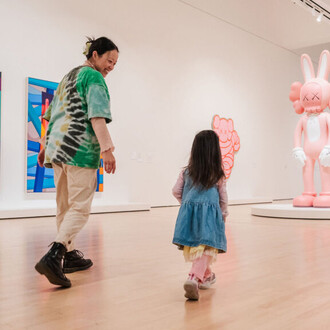Founding pieces in the collection were purchased from the California International Midwinter Exposition in 1894. From that moment, the de Young’s collections of African art, like those of most major American museums, grew in a random fashion rather than by design—enriched in part by purchases, but mostly by donations from entrepreneurs, travelers, educators, and even Peace Corps volunteers. Research about their histories is ongoing.
Since 1971, when the Department of Africa, Oceania, and the Americas was founded, the collection has been developed to present the richness and diversity of art from sub-Saharan Africa. A few works extend back to the great civilizations of Africa, including the kingdoms of Mali, Ghana, and Songye, which maintained major commercial centers and corresponding trade routes. At the entrance of the gallery, visitors will find the oldest wood sculpture in the collection, probably commemorating a great ancestor, dated to at least the 13th century. Nearby, an ancient maternity figure from Mali made of terracotta might also represent a legendary or founding ancestor.
Most of the collection dates from the 19th century through the mid-20th century, when tremendous political, economic, and religious change impacted art and culture in many societies through colonialism, imperialism, war, and globalism. A large case in the center of the gallery includes stools, a form of seating common in many culture groups; they are expertly crafted to be functional but also expressive in form and decoration. Chairs were introduced by Europeans and then adapted and adorned in local styles, such as the highly decorated royal chair from Ghana.















